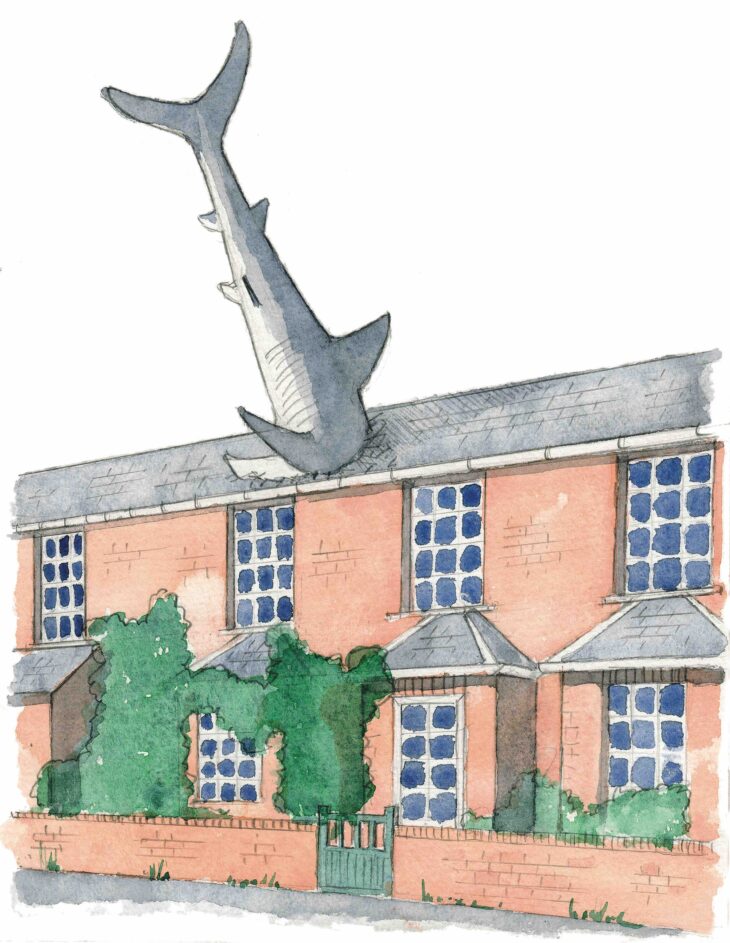What is it about follies that we find so enticing? Perhaps it is their variety – real ruins, fake ruins, monumental columns, ornamental cottages, dovecotes and even gazebos can all be encompassed by the term. Perhaps it is the fact that many are essays in ‘pure architecture’, built with no function in mind other than to delight and entertain. Or perhaps it is the hubris inherent in the name, which calls to mind the aspirations of those who built them – invariably eccentric and sometimes downright mad.
The imaginative and even emotional pull of these structures is borne out by the existence of the Folly Fellowship, a pressure group founded to ‘protect, preserve and promote’ follies everywhere. By everywhere, I of course mean primarily England, for the folly seems to be a curiously English phenomenon, a manifestation of the fabled eccentricity of its inhabitants. Certainly, in discussing the folly, the word ‘eccentric’ never seems to be far off. Some can take it to extremes. When presenting his personal account of the folly in a television programme of 1988, the satirical cartoonist Gerald Scarfe travelled across the country dressed in a white tailcoat and riding by turns on an elephant, a llama and a camel. The programme ends with Scarfe building his own folly in the shape of a camel – to be inhabited by a hermit played by Bob Geldof.
King Alfred’s Tower, Stourhead in ‘Follies: An Architectural Journey’ by Rory Fraser. Courtesy Zuleika

Rory Fraser, author of Follies: An Architectural Journey, is the latest to be captivated by the subject. His method and means of transport are more conventional than Scarfe’s, but his account has taken the spirit of folly to heart. Illustrated by the author’s charming and carefully observed watercolour studies, Follies is a selection of some 25 structures ‘built in a playful style, furnished with a good story and set in a beautiful landscape’, as Fraser describes the Teapot Obelisk in Deene Park (the most recent of his follies).
Leapfrogging the Victorian period in toto – the ‘evangelising-cum-imperial’ spirit of the age was anathema to the ethos of the folly, Fraser argues – his is a personal view. But with most, including the author, defining folly as something that exists only when it is perceived as such, personal bias could be said to be inherent to the subject. The follies he chooses, then, include some more expected examples of the country-house garden variety – King Alfred’s Tower at Stourhead, Wiltshire, for instance – and some more creative choices such as Victor Pasmore’s Apollo Pavilion in Peterlee, County Durham and the so-called Headington Shark (a giant sculpture of a shark that crashes through the roof of a house in Headington, Oxford). What is not inherent, however, is Fraser’s enthusiasm, which he owes to the influence of a brilliant and committed English teacher who introduced Fraser to the attractions of architecture, and to whom the book is dedicated.
The Headington Shark, Oxford in ‘Follies: An Architectural Journey’ by Rory Fraser. Courtesy Zuleika

Fraser’s interest in follies is not limited to their architectural form. He tries to go beyond the purely architectural by providing a catalogue of stories as well as of the follies themselves, clearly revelling in the retelling of these tales – some true, others imagined and nearly all fantastical. Landscape, too, plays an important part and it is when discussing the relationship of these follies with nature that Fraser’s writing is at its most powerful.
In this, Fraser has perhaps arrived at the answer to the question that I posed at the start. Follies appeal to us not because of what they are, but what they stand for. By themselves, they are curious misadventures, but taken as a whole they represent the hopes and aspirations of men and women whenever they decide to build. In his conclusion, Fraser wonders whether England is the greatest of all follies, but perhaps architecture can at times be a greater folly? As cities divorced from landscape seem to take over the face of the earth, populated with ever taller and more strangely shaped buildings, the follies of Fraser’s book begin to seem positively wise by comparison.
Follies: An Architectural Journey by Rory Fraser is published by Zuleika Books



